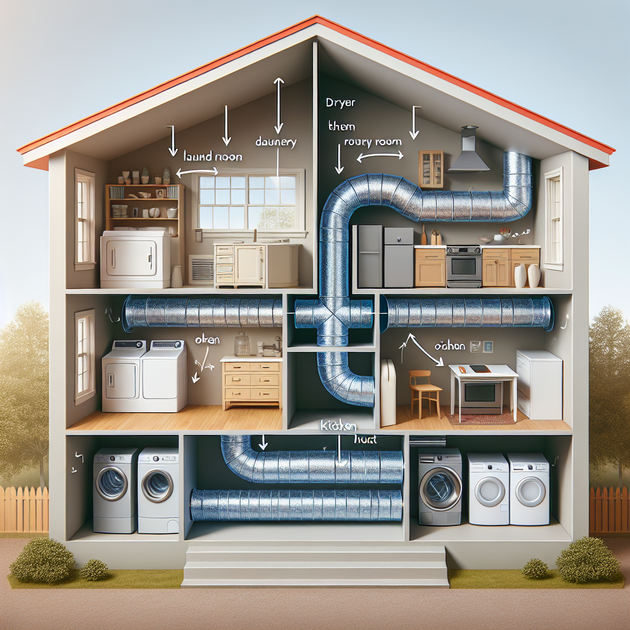Ever wondered why your kitchen suddenly smells like fresh laundry when you’re drying clothes—or vice versa? Turns out, there’s a hidden risk if your dryer exhaust shares a line with your oven hood exhaust. It seems convenient at first glance—one less hole in the roof!—but mixing these two can cause some serious problems for both safety and air quality.
Why Dryer Exhaust Should Never Share an Oven Hood Vent
The main reason is simple: both appliances are designed to push very different kinds of air out of your house. A clothes dryer sends warm air full of lint; an oven hood pulls out greasy air from cooking. If their vents are joined together:
- Lint from the dryer can collect inside the shared ductwork.
- Grease from the kitchen can stick to that lint.
- This combination is extremely flammable—grease plus lint is basically homemade kindling.
- Backdrafts can send odors or particles from one part of the house into another.
- Moisture from laundry drying could lead to mold growth inside kitchen ducts.
Building codes everywhere say that each appliance needs its own vent all the way outside. There’s no wiggle room here—it’s about keeping everyone safe.
Signs You Have a Shared Dryer and Kitchen Vent
Not sure if your house has this setup? Here are some clues:
- You smell laundry in the kitchen—or fried food in the laundry room.
- The roof or wall only has one vent pipe for both rooms.
- You notice extra lint collecting near or inside the kitchen fan filter.
- Your oven hood doesn’t clear smoke as well as it should.
If any of these sound familiar, it’s time to investigate further.
What Can Go Wrong with Shared Exhaust Vents?
Let’s look at what actually happens when you combine dryer exhaust with an oven hood exhaust:
- Fire hazard: Flammable lint meets sticky grease—if something sparks or overheats, it can ignite quickly.
- Poor air quality: Mixing moist air from laundry with cooking fumes means you could have more mold spores or allergens circulating.
- Inefficiency: Both systems will struggle—your clothes may take longer to dry and your kitchen won’t ventilate as well.
- Code violations: Insurance might not cover damages if there’s ever a fire caused by this setup.
Some folks try cleaning out their vents more often as a quick fix (like OP did on Reddit), but that only buys time—it doesn’t solve the root issue.
A Real-Life Example (and What To Do Next)
Here’s how this plays out in real life. A homeowner posted online about noticing their kitchen smelled like laundry whenever they dried clothes. They found that both their dryer and kitchen fan were hooked up to the same roof vent! Cleaning out accumulated lint helped for a while—but who wants flammable dust clinging to greasy ducts overhead? Instead of trying yet another DIY patch-up job on top of someone else’s shortcut, they decided to call in their builder for a proper solution during their next renovation.
If you discover this problem at home, don’t ignore it. Here are smart steps:
- Stop using one or both vents until they’re separated—especially before using high heat settings.
- Call an HVAC professional or builder with experience in proper venting solutions.
- If you just bought your house and had an inspection, bring this up right away—it might have been missed but should be addressed ASAP.
A quick note on inspectors: While most should spot obvious code violations like shared vents, sometimes creative past renovations slip under the radar. If you’re unsure about something odd in your ductwork or venting system, always ask for clarification.
Is Your Home’s Venting Up to Code?
Home improvement shortcuts can lead to hidden dangers down the line. The best move is always fixing things right—even if that means extra work during renovations. Separate those ducts now before minor annoyances (like weird smells) turn into major risks.
Ever found an odd DIY solution in your own home? How did you fix it—and what lessons did you learn along the way?

Leave a Reply